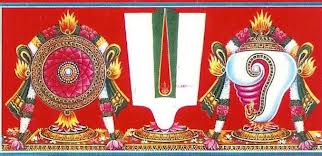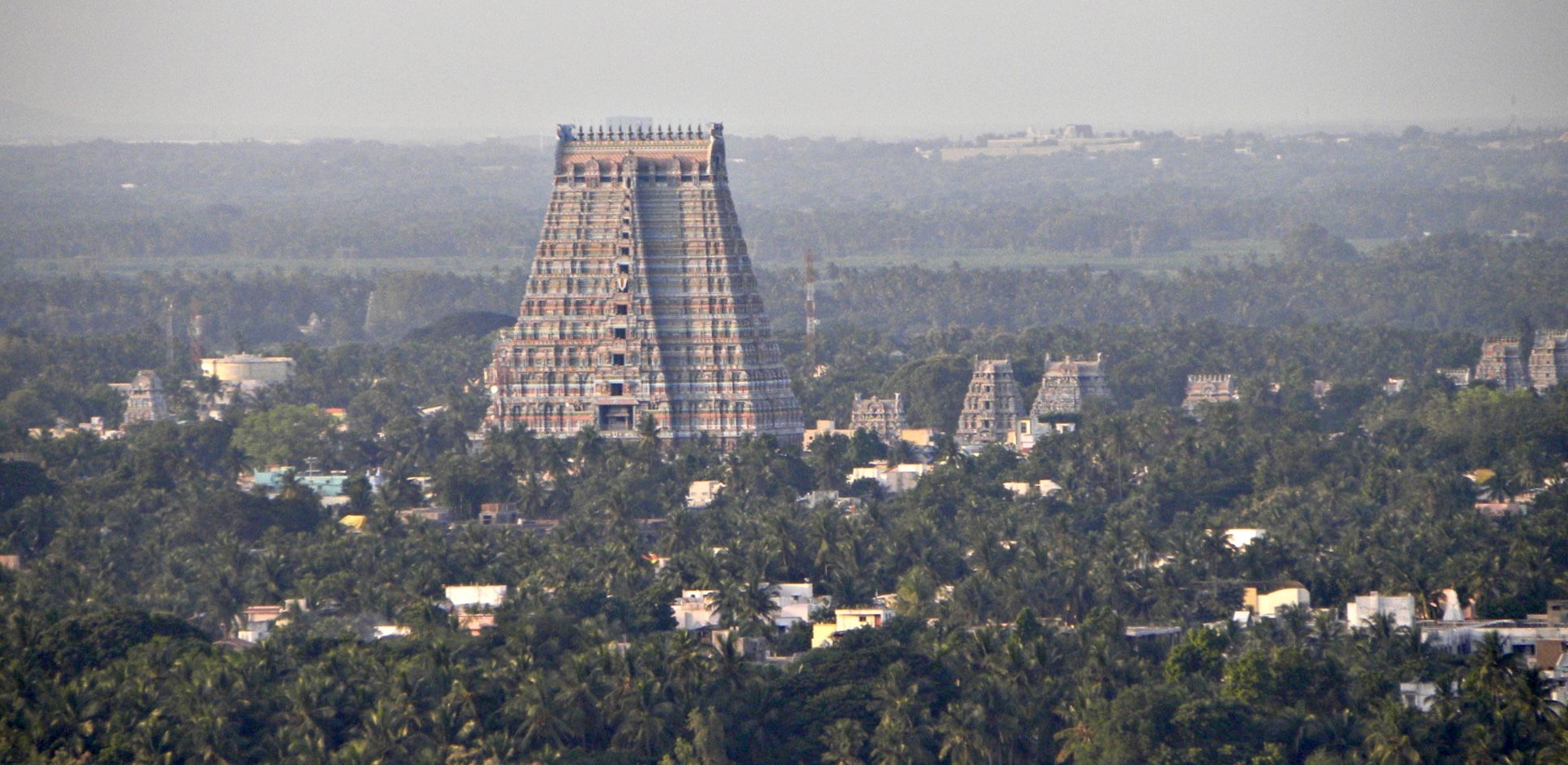|
Saranagati
Sharanagati (Sanskrit: शरणागति; IAST: ''Śaraṇāgati'' ) or Prapatti (Sanskrit: प्रपत्ति; IAST: ''Prapatti''), is the process of total Surrender (spirituality and psychology), surrender to Brahman, God (Narayana-Krishna) in Vaishnavism. The process of Sharanagati forms the basis of devotion to Vishnu in the bhakti traditions within the Sri Sampradaya, propounded by Ramanujacharya, Ramanuja (1017–1137 CE), and the Gaudiya Vaishnavism, Gaudiya Sampradaya, founded by Chaitanya Mahaprabhu (1482–1533 CE). Ramanuja considered surrender to Vishnu and his consort Lakshmi to be the highest goal of life, while Chaitanya emphasised surrender to Krishna and his consort Radha as supreme through physical surrender to the preceptor/guru. Etymology The term prapatti comes from Sanskrit root pad and the prefix pra (pra+pad), meaning "to take refuge with/in". In Sri Vaishnavism, it refers to the act of total self-surrender at the feet of God as a means to attain ... [...More Info...] [...Related Items...] OR: [Wikipedia] [Google] [Baidu] |
Sri Sampradaya
Sri Vaishnavism () is a denomination within the Vaishnavism tradition of Hinduism, predominantly practiced in South India. The name refers to goddess Lakshmi (also known as Sri), as well as a prefix that means "sacred, revered", and the god Vishnu, who are together revered in this tradition. The tradition traces its roots to the ancient Vedas and Pancharatra texts, popularised by the Alvars and their canon, the Naalayira Divya Prabandham. The founding of Sri Vaishnavism is traditionally attributed to Nathamuni of the 10th century CE; its central philosopher has been Ramanuja of the 11th century, who developed the ''Vishishtadvaita'' ("qualified non-dualism") Vedanta sub-school of Hindu philosophy. The tradition split into two denominations around the 16th century. The Vadakalai sect vested the Vedas with the greatest authority and follow the doctrine of Vedanta Desika, whereas the Tenkalai sect vested the Naalayira Divya Prabandham with the greatest authority and follow the pri ... [...More Info...] [...Related Items...] OR: [Wikipedia] [Google] [Baidu] |
Ramanujacharya
Ramanuja ('; Middle Tamil: Rāmāṉujam; Classical Sanskrit: Rāmānuja; 1077 – 1157), also known as Ramanujacharya, was an Indian Hindu philosopher, guru and social reformer. He is one of the most important exponents of the Sri Vaishnavism tradition in Hinduism. His philosophical foundations for devotional practice were influential in the Bhakti movement. Ramanuja's guru was Yādava Prakāśa, a scholar who, traditionally, is said to have belonged to the Advaita Vedānta tradition, but probably was a Bhedabheda scholar. Sri Vaishnava tradition holds that Ramanuja disagreed with his guru and the non-dualistic Advaita Vedānta, and instead followed in the footsteps of Tamil Alvārs tradition, the scholars Nāthamuni and Yamunāchārya. Ramanuja is famous as the chief proponent of Vishishtadvaita school of Vedānta, and his disciples were likely authors of texts such as the Shatyayaniya Upanishad. Ramanuja himself wrote influential texts, such as Sanskrit bhāsyas ... [...More Info...] [...Related Items...] OR: [Wikipedia] [Google] [Baidu] |
Surrender (spirituality And Psychology)
To surrender in spirituality and religion means that a believer completely gives up their own will and subjects his thoughts, ideas, and deeds to the will and teachings of a higher power. It may also be contrasted with submission. Surrender is willful acceptance and yielding to a dominating force and their will. Christianity In Christianity, the first main principle of surrender is "Dying to Self", or "The Carrying of Your Cross", allowing Christ to reign and rule in the order of how one's life is carried out, illustrated in the following passages: Another principle central to the Christian concept of surrender is the concept of surrender to God's Will. Surrendering to God's will entails both the surrender of our will to His, in His sovereignty over all things, in which His ways of operating and thinking prevails over humanity's and Satan's. Secondarily, the surrender of one's will is evidenced by the acknowledgement of God's will for our personal lives in even the smalle ... [...More Info...] [...Related Items...] OR: [Wikipedia] [Google] [Baidu] |
Ramanuja
Ramanuja ('; Middle Tamil: Rāmāṉujam; Classical Sanskrit: Rāmānuja; 1077 – 1157), also known as Ramanujacharya, was an Indian Hindu philosopher, guru and social reformer. He is one of the most important exponents of the Sri Vaishnavism tradition in Hinduism. His philosophical foundations for devotional practice were influential in the Bhakti movement. Ramanuja's guru was Yādava Prakāśa, a scholar who, traditionally, is said to have belonged to the Advaita Vedānta tradition, but probably was a Bhedabheda scholar. Sri Vaishnava tradition holds that Ramanuja disagreed with his guru and the non-dualistic Advaita Vedānta, and instead followed in the footsteps of Tamil Alvārs tradition, the scholars Nāthamuni and Yamunāchārya. Ramanuja is famous as the chief proponent of Vishishtadvaita school of Vedānta, and his disciples were likely authors of texts such as the Shatyayaniya Upanishad. Ramanuja himself wrote influential texts, such as Sanskrit bhāsyas on ... [...More Info...] [...Related Items...] OR: [Wikipedia] [Google] [Baidu] |
Bhagavad Gita
The Bhagavad Gita (; ), often referred to as the Gita (), is a Hindu texts, Hindu scripture, dated to the second or first century BCE, which forms part of the Hindu epic, epic poem Mahabharata. The Gita is a synthesis of various strands of Indian religious thought, including the Vedic concept of ''dharma'' (duty, rightful action); samkhya-based ''yoga'' and ''jnana'' (knowledge); and ''bhakti'' (devotion). Among the Hindu denominations, Hindu traditions, the text holds a unique pan-Hindu influence as the most prominent sacred text and is a central text in Vedanta and the Vaishnava, Vaishnava Hindu tradition. While traditionally attributed to the sage Veda Vyasa, the Gita is historiographically regarded as a composite work by multiple authors. Incorporating teachings from the Upanishads and the samkhya Yoga (philosophy), yoga philosophy, the Gita is set in a narrative framework of dialogue between the pandava prince Arjuna and his charioteer guide Krishna, an avatar of Vishnu, a ... [...More Info...] [...Related Items...] OR: [Wikipedia] [Google] [Baidu] |
Stotra Ratna
The ''Stotra Ratna'' (), also rendered the ''Alavandarstotra'', is a Sanskrit work of Hindu literature written by the Sri Vaishnava philosopher Yamunacharya. The hymn consists of sixty-five stanzas that extol the deity Vishnu. Etymology The title of the work consists of the Sanskrit terms ''stotra'' (hymn) and ''ratnam'' (jewel), therefore literally meaning, 'the jewel of hymns'. Description The main theme of the ''Stotra Ratna'' is '' prapatti'', the concept of total surrender to God. In the first few verses, the author pays tribute to his teachers. The subsequent verses establish the supremacy of Vishnu and his accessibility to his devotees, to whom he is referred to as a saviour. Yamunacharya offers his surrender to Vishnu, indicating that even simple acts of service such as offering salutations are effective to his worship. He states that divine mercy would be offered to all those who undertake the path of ''prapatti,'' also describing it to be the only means of attaini ... [...More Info...] [...Related Items...] OR: [Wikipedia] [Google] [Baidu] |
Vedanta Desika
Vedanta Desika (1268–1369), also rendered Vedanta Desikan, Swami Vedanta Desika, and Thoopul Nigamantha Desikan, was an Indian polymath who wrote philosophical as well as religious and poetical works in several languages, including Sanskrit, Manipravaḷam (a Sanskritised form of literary Tamil), Tamil and Prakrit. He was an Indian philosopher, Sri Vaishnava guru, and one of the most brilliant stalwarts of Sri Vaishnavism in the post-Ramanuja period. He was a Hindu devotee, poet, Master of Acharyas (''desikan'') and a logician and mathematician. He was the disciple of Kidambi Appullar, also known as Athreya Ramanujachariar, who himself was of a master-disciple lineage that began with Ramanuja. Vedanta Desika is considered to be avatar (incarnation) of the divine bell of Venkateshvara of Tirumala by the Vadakalai sect of Sri Vaishnavism. Vedanta Desika belongs to Vishvamitra/Kaushika gotra. On the occasion of 750th anniversary of the life of Vedanta Desika, the Indian p ... [...More Info...] [...Related Items...] OR: [Wikipedia] [Google] [Baidu] |
Bhaktiyoga
''Bhakti'' (; Pali: ''bhatti'') is a term common in Indian religions which means attachment, fondness for, devotion to, trust, homage, worship, piety, faith, or love.See Monier-Williams, ''Sanskrit Dictionary'', 1899. In Indian religions, it may refer to loving devotion for a personal God (like Krishna or Devi), a formless ultimate reality (like Nirguna Brahman or the Sikh God) or an enlightened being (like a Buddha, a bodhisattva, or a guru).Bhakti ''Encyclopædia Britannica'' (2009)Karen Pechelis (2011), "Bhakti Traditions", in ''The Continuum Companion to Hindu Studies'' (Editors: Jessica Frazier, Gavin Flood), Bloomsbury, , pp. 107–121 Bhakti is often a deeply emotional devotion based on a relationship be ... [...More Info...] [...Related Items...] OR: [Wikipedia] [Google] [Baidu] |
Alvars
The Alvars () are the Tamil poet-saints of South India who espoused '' bhakti'' (devotion) to the Hindu preserver deity Vishnu, in their songs of longing, ecstasy, and service. They are venerated in Vaishnavism, which regards Vishnu as the Ultimate Reality. Many modern academics place the lifetime of the Alvars between the 5th century and 9th century CE. Traditionally, the Alvars are considered to have lived between and . Orthodoxy posits the number of Alvars as ten, though there are other references that include Andal and Madhurakavi Alvar, making the number 12. Andal is the only female Alvar. Together with the contemporary 63 Shaivite Nayanars, they are among the most important saints from Tamil Nadu. The devotional outpourings of the Alvars, composed during the early medieval period of Tamil history, were the catalysts behind the Bhakti Movement through their hymns of worship to Vishnu and his avatars. They praised the Divya Desams, the 108 divine realms of deities ... [...More Info...] [...Related Items...] OR: [Wikipedia] [Google] [Baidu] |
Page 346 Life In India Or Madras, The Neilgherries, And Calcutta
Page most commonly refers to: * Page (paper), one side of a leaf of paper, as in a book Page, PAGE, pages, or paging may also refer to: Roles * Page (assistance occupation), a professional occupation * Page (servant), traditionally a young male servant * Page (wedding attendant) People and fictional characters * Page (given name), a list of people * Page (surname), a list of people and fictional characters * Pages (surname) * H. A. Page, a pen name of Scottish author Alexander Hay Japp (1836–1905) Places Australia * Page, Australian Capital Territory, a suburb of Canberra * Division of Page, New South Wales * Pages River, a tributary of the Hunter River catchment in New South Wales, Australia * The Pages, South Australia, two islands and a reef **The Pages Conservation Park, a protected area in South Australia United States * Page, Arizona, a city * Page, Indiana * Page, Minneapolis, Minnesota, a neighborhood * Page, Nebraska, a village * Page, North Dakota, a city * ... [...More Info...] [...Related Items...] OR: [Wikipedia] [Google] [Baidu] |
Vedas
FIle:Atharva-Veda samhita page 471 illustration.png, upright=1.2, The Vedas are ancient Sanskrit texts of Hinduism. Above: A page from the ''Atharvaveda''. The Vedas ( or ; ), sometimes collectively called the Veda, are a large body of religious texts originating in ancient India. Composed in Vedic Sanskrit, the texts constitute the oldest layer of Sanskrit literature and the oldest Hindu texts, scriptures of Hinduism. There are four Vedas: the Rigveda, the Yajurveda, the Samaveda and the Atharvaveda. Each Veda has four subdivisions – the Samhitas (mantras and benedictions), the Brahmanas (commentaries on and explanation of rituals, ceremonies and sacrifices – Yajñas), the Aranyakas (text on rituals, ceremonies, sacrifices and symbolic-sacrifices), and the Upanishads (texts discussing meditation, philosophy and spiritual knowledge).Gavin Flood (1996), ''An Introduction to Hinduism'', Cambridge University Press, , pp. 35–39A Bhattacharya (2006), ''Hindu Dharma: Introduc ... [...More Info...] [...Related Items...] OR: [Wikipedia] [Google] [Baidu] |








